November 2010
HMS ILLUSTRIOUS - the last British Aircraft Carrier?
Fairey (Blackburn) Swordfish Mk.1, Taranto, 1940
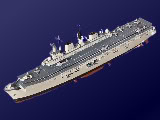
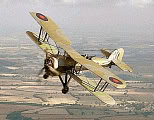
|
November 2010 HMS ILLUSTRIOUS - the last British Aircraft Carrier? Fairey (Blackburn) Swordfish Mk.1, Taranto, 1940 |
|
![]()
![]() This
Month's selected
WW2 70th Anniversaries:
This
Month's selected
WW2 70th Anniversaries:
11-12 November 1940. Operation JUDGEMENT - Twenty one Swordfish aircraft from HMS ILLUSTRIOUS (813, 815, 819 and 824 Sqns), with Fulmar fighter cover (806 Sqn), attack and disable the Italian Fleet at Taranto. From a launch position 170 miles off the Italian coast at night, two waves of Swordfish torpedo and bomb the Italians in their home port. Two aircraft are shot down, but the Italian Navy suffers significant damage, with half its Fleet severely damaged, forcing its withdrawal to the more easily protected port of Naples and ensuring that it would play little meaningful role in the remainder of the war.
Amongst the observers ashore in Taranto that evening is the Japanese Naval Attache, who is particularly impressed with the effectiveness of a long range, decisive surprise attack on an enemy force in its home base and he files an excited report home. Just over a year later, at Pearl Harbour, the Japanese Fleet launches a copycat operation. However, despite being far larger in size and causing greater devastation, the Japanese operation does not account for the US Aircraft Carriers, which, by sheer luck, are at sea during the attack.
14 November. 500 Luftwaffe bombers attack and destroy the city of Coventry. In response, the RAF begins the systematic aerial destruction of Hamburg.
20 November. Hungary, Romania and Slovakia join the Axis Powers.
27 November. The Royal Navy and Italian Navy engage each other at Cape Spartivento. The battle is inconclusive, but marks the last serious Italian Navy threat to the British Fleet. Admiral Cunningham (Mediterranean Fleet at Alexandria) and Admiral Somerville (Force H at Gibraltar) now have undisputed command of the Mediterranean sea-lanes, allowing the British Army's North African campaign to begin in earnest and the isolated island of Malta to be resupplied.
HMS ILLUSTRIOUS, Operation Palliser, Sierra Leone 2000.
Dragon, 1/700
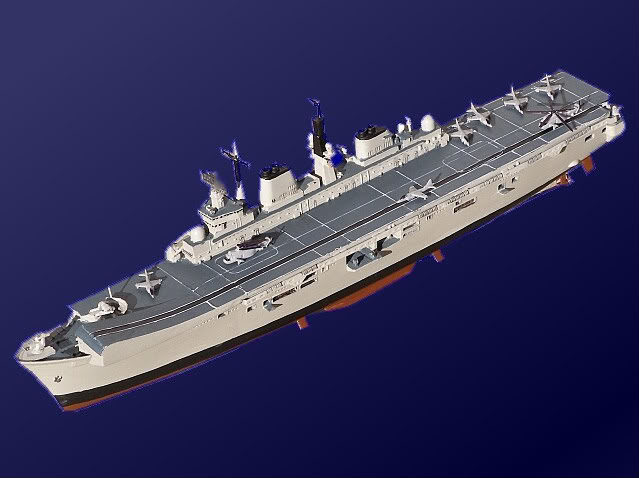
The INVINCIBLE Class carriers have been the backbone of the Royal Navy's carrier force since the early 1980s, seeing active service in the Falklands, Adriatic, Gulf and West Africa in addition to their intended Cold War duties. Designed in the 1970s as a "Through Deck Cruiser", in order to overcome political objections to aircraft carriers, they were originally intended as Anti-Submarine helicopter ships. However, the performance of the remarkable Sea Harrier during the 1982 Falklands War was to transform the perception of the INVINCIBLEs, re-invigorating the proud tradition of Fleet Air Arm fixed wing aviation as well as advancing the use of helicopters in a wide range of maritime roles.
During the building of this kit, the UK Government announced its Strategic Defence & Security Review, which included the removal of the Harrier Fleet and early disposal of HMS ARK ROYAL (INVINCIBLE decommissioned in 2008). The future of ILLUSTRIOUS is uncertain; a decision on whether ILLUSTRIOUS or OCEAN will remain as a Commando Helicopter Carrier will be taken shortly. However, with real decisions on the future of the (aircraft-less) Queen Elizabeth Class Carriers postponed until the next Defence Review (2015), it is now entirely possible that HMS ILLUSTRIOUS will be the last ever Royal Navy Aircraft Carrier.
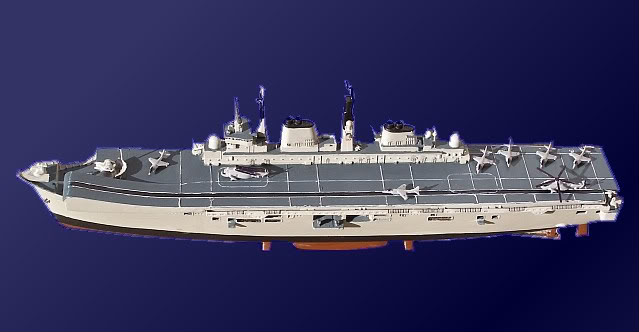
OK, so its not the same ILLUSTRIOUS of Taranto fame, but way back in 1984, I had the great pleasure of serving in this ship, during which time I attended a particularly boisterous Taranto Night Wardroom celebration, that took place at sea in the Mediterranean just off the Italian coast. It would be fair to say that the Fleet Air Arm made the most of the evening, to celebrate what is perhaps one of their greatest victories (Link to some pictures).
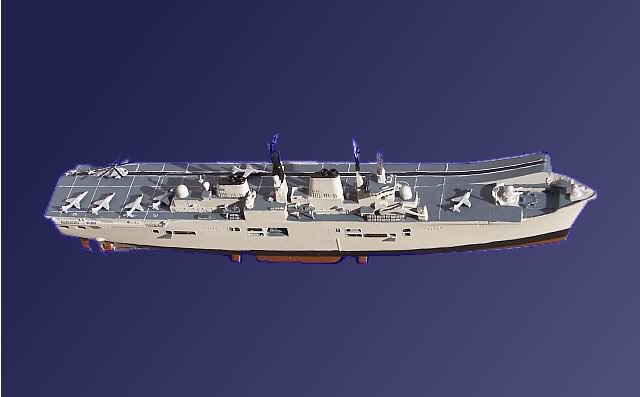
This is the 1/700 Dragon kit in one of its earliest forms; Dragon have provided numerous versions of the same basic mould, to cover all three of the INVINCIBLE class carriers throughout their life. The three ships of this class have seen considerable changes since they were first commissioned in the early 1980s, including changes to their flight deck layout (such as the removal of the Sea Dart missile system), additional close in weaponry and decoys, plus new sensors and communications fits. ILLUSTRIOUS in particular, gained an additional (and not insubstantial) after mast in 2003, which changed her profile significantly.
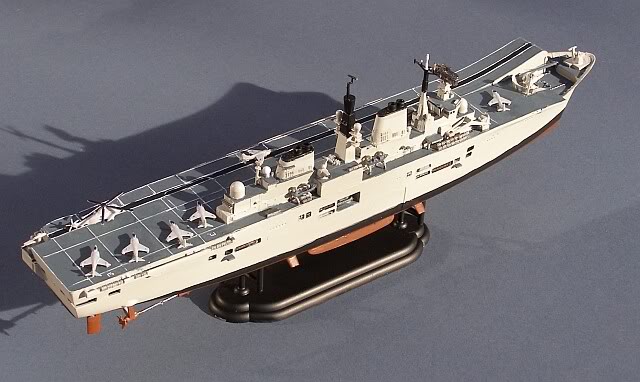
The kit is a very straightforward build, althought the fit of the ramp and its underside extension wasn't particularly good. More recent Dragon issues have photoetch parts (and cost a lot more!), but the basic kit as seen here is still very impressive.
The decals/transfers were a real disappointment, as they all disintegrated on contact with water, and I found painting the (excessively raised) flight deck markings was a little beyond my painting skills. In fact, the whole thing stretched my abilities, reinforcing my admiration for those who produce fantastic ship models in this scale.
A vast range of optional parts is included on the sprues, so read the instructions carefully and refer to photographs to get it right!
Fairey Swordfish Mk.1, 815 Sqn Fleet Air Arm, HMS ILLUSTRIOUS, Taranto, November 1940.
Matchbox 1/72, with Aeromaster decals
"Taranto, and the night of November 11-12, 1940, should be remembered for ever as having shown once and for all that in the Fleet Air Arm the Navy has its most devastating weapon."
Andrew Browne Cunningham, 1st Viscount Cunningham of Hyndhope - Admiral
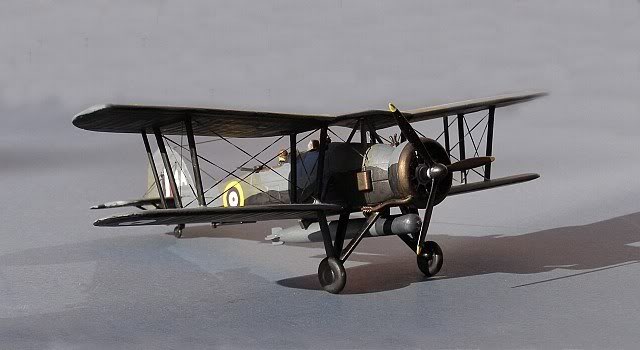
The Swordfish needs little introduction. Slow and agricultural in appearance, it was an immensely robust and stable weapons platform that saw the RN through WW2, outlasting its replacement and fighting with distinction in every theatre of the war. Easy to fly and powered by the highly reliable Bristol Pegasus engine, it made a significant contribution to the war effort. BAC 2010 - 100 Years of the Bristol Aeroplane Company
This model represents the aircraft flown at Taranto by the CO of 815 Sqn, Lt Cdr K "Hooch" Williamson DSO, with Observer NJ "Blood" Scarlett RN.
Williamson led the first attack wave, sinking the Battleship Conte de Cavour. Williamson's aircraft was subsequently shot down, with he and his observer taken as PoWs. The aircraft was recovered by the italians and a picture of her can be seen here: http://www.fleetairarmarchive.net/aircraft/faacapturedaircrafthomepage.html.
One further aircraft was downed during the operation; Lieutenant G W Bayley RN (Pilot) and Lieutenant J H Slaughter RN (Observer), from HMS EAGLE's Swordfish Squadron and part of the second strike wave, were both killed when their aircraft was shot down.
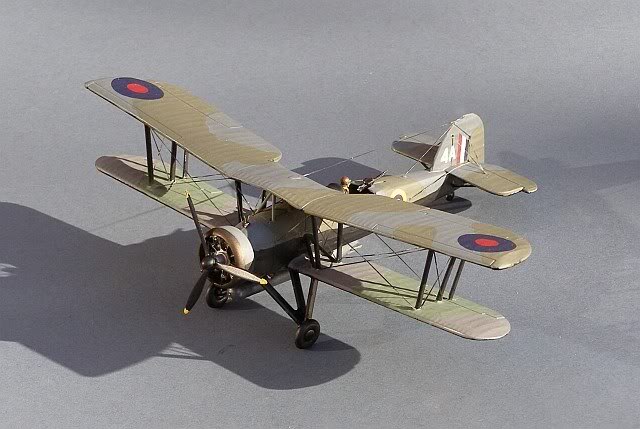
Although the Swordfish normally carried a crew of 3, Pilot, Observer and Telegraphist Air Gunner (TAG), for this long range raid, the Observer's normal posiiton was occupied by an auxiliary fuel tank and the TAG was not carried.
The Swordfish is another unsung Matchbox biplane gem, currently available from Revell. Far better than the Airfix kit, it can certainly hold its own with the Frog version (released by MPM amongst others). Standfast the rigging, it is an easy build, let down only by the very sparse cockpit. As supplied, it comes with the radar fit in the Observer's position to reflect a Mk III, but I have built this up to represent the long range tanks.
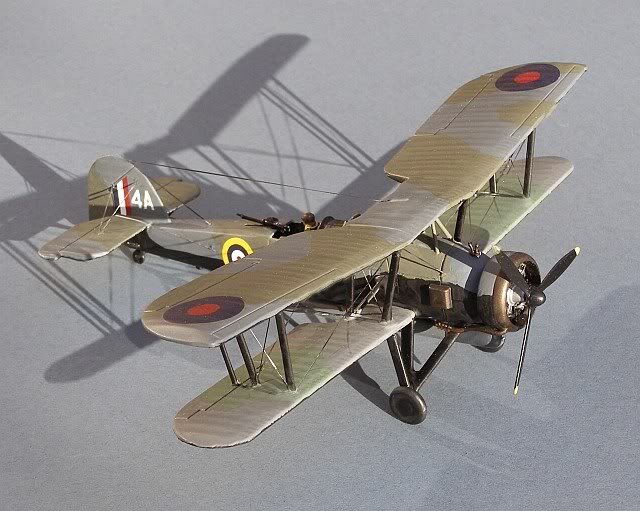
As with most FAA aircraft, there is some controversy over the colouring - it seems that the aircraft on this raid were all painted differently, with some in their normal sky undersides, some in dark blue-grey (EDSG?) undersides and some in black. Prior to Tarnato, 815 were conducting night raids over the North African coast, so black undersides are entirely credible and I have therefore gone with Aeromaster's suggestion on the decal sheet.
Rigging is stretched lycra thread (from Jenners sewing department in Edinburgh), attached using superglue.
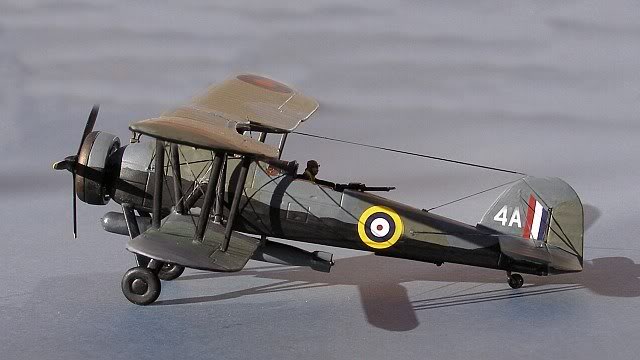
Although this is by no means a state of the art kit, I have really enjoyed building this one, and indeed it is the model that I am most pleased with this year (so far!).
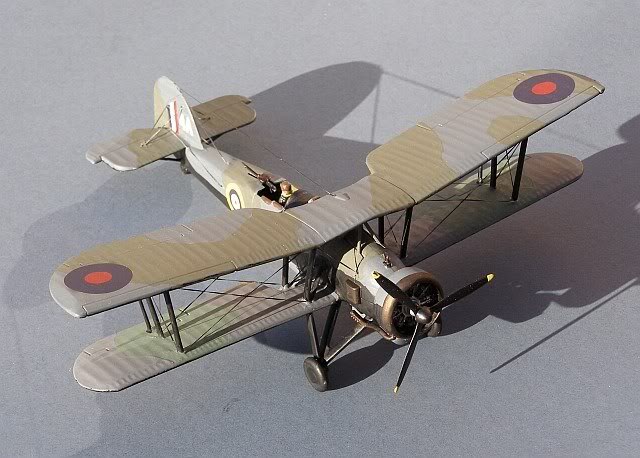
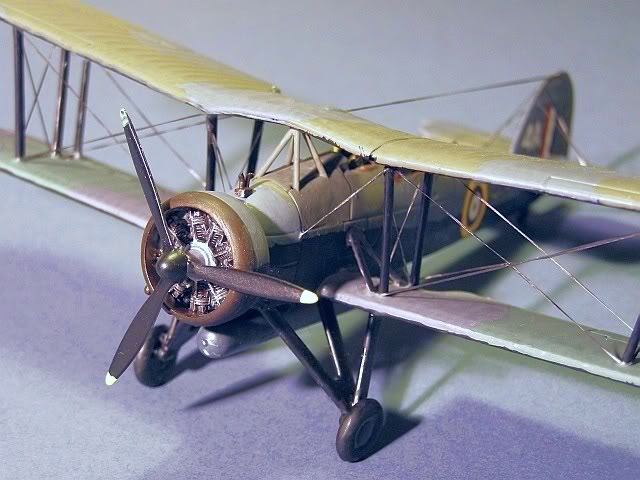
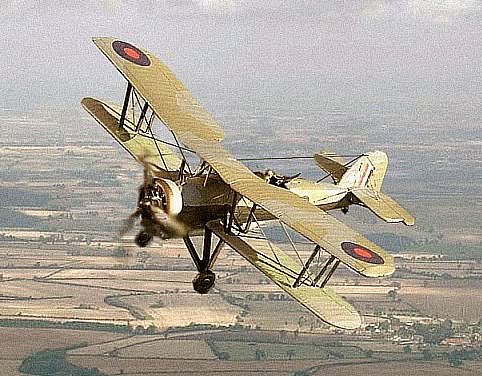
Link to my WW2 RN Aircraft pages
Background Picture - Poppy, Salisbury Plain, July 2010.
Red
for the blood, Black for the mud, and Green for the green fields beyond.
In
Flanders fields the poppies blow
Between
the crosses, row on row,
That
mark our place: and in the sky
The
larks, still bravely singing, fly
Scarce
heard amid the guns below.
We
are the Dead. Short days ago
We
lived, felt dawn, saw sunset glow,
Loved,
and were loved, and now we lie
In
Flanders fields.
Take
up our quarrel with the foe:
To
you from failing hands we throw
The
torch; be yours to hold it high.
If
ye break faith with us who die
WE
SHALL NOT SLEEP,
THOUGH
POPPIES GROW
IN
FLANDERS FIELDS.
Lieutenant
Colonel John McCrae, May 1915.www.g
|
|
In
France, the blue Cornflower (Bleuet) is worn as a |
www.gengriz.co.uk